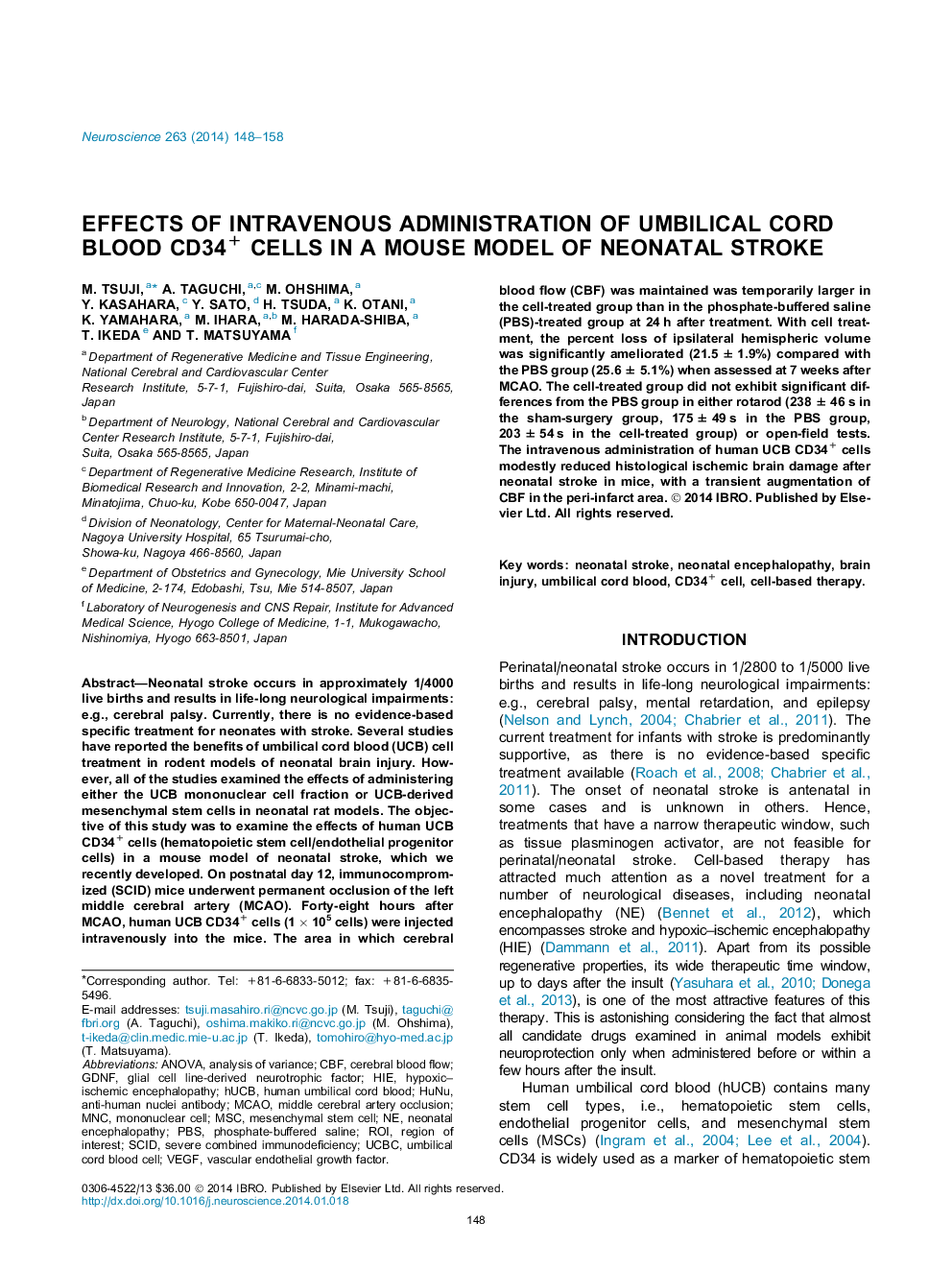| کد مقاله | کد نشریه | سال انتشار | مقاله انگلیسی | نسخه تمام متن |
|---|---|---|---|---|
| 4337752 | 1614813 | 2014 | 11 صفحه PDF | دانلود رایگان |

• We test effects of umbilical cord blood cells in a model of neonatal brain injury.
• A novel highly reproducible model of neonatal stroke is used.
• CD34+ cells (hematopoietic stem cells/endothelial progenitor cells) are administered.
• Intravenous administration of the cells 48 h after the insult ameliorates the injury.
• The cell therapy augments cerebral blood flow in the peri-infarct area.
Neonatal stroke occurs in approximately 1/4000 live births and results in life-long neurological impairments: e.g., cerebral palsy. Currently, there is no evidence-based specific treatment for neonates with stroke. Several studies have reported the benefits of umbilical cord blood (UCB) cell treatment in rodent models of neonatal brain injury. However, all of the studies examined the effects of administering either the UCB mononuclear cell fraction or UCB-derived mesenchymal stem cells in neonatal rat models. The objective of this study was to examine the effects of human UCB CD34+ cells (hematopoietic stem cell/endothelial progenitor cells) in a mouse model of neonatal stroke, which we recently developed. On postnatal day 12, immunocompromized (SCID) mice underwent permanent occlusion of the left middle cerebral artery (MCAO). Forty-eight hours after MCAO, human UCB CD34+ cells (1 × 105 cells) were injected intravenously into the mice. The area in which cerebral blood flow (CBF) was maintained was temporarily larger in the cell-treated group than in the phosphate-buffered saline (PBS)-treated group at 24 h after treatment. With cell treatment, the percent loss of ipsilateral hemispheric volume was significantly ameliorated (21.5 ± 1.9%) compared with the PBS group (25.6 ± 5.1%) when assessed at 7 weeks after MCAO. The cell-treated group did not exhibit significant differences from the PBS group in either rotarod (238 ± 46 s in the sham-surgery group, 175 ± 49 s in the PBS group, 203 ± 54 s in the cell-treated group) or open-field tests. The intravenous administration of human UCB CD34+ cells modestly reduced histological ischemic brain damage after neonatal stroke in mice, with a transient augmentation of CBF in the peri-infarct area.
Figure optionsDownload high-quality image (86 K)Download as PowerPoint slide
Journal: Neuroscience - Volume 263, 28 March 2014, Pages 148–158